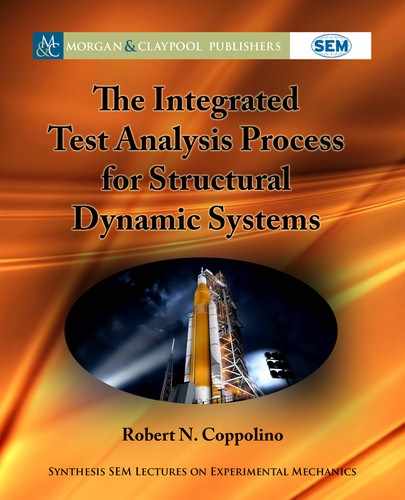
65
C H A P T E R 4
Measured Data Analysis
4.1 PART 1: PRELIMINARY MEASURED DATA ANALYSIS
4.1.1 INTRODUCTION
Physical phenomena are either deterministic or random (non-deterministic) [1]. A determin-
istic time history record follows an explicit mathematical relationship (e.g., a sinusoid) while a
random time history can only be known in terms of statistical characteristics (e.g., mean value,
standard deviation). Deterministic time history data classifications are summarized in Table 4.1.
Table 4.1: Deterministic time history data classifications
Deterministic Time History Records
Class Sub-Class Example
Periodic Sinusoidal
A · sin(ωt)
Complex Periodic
∑ A
n
sin(nω
0
t + λ
n
)
Non-Periodic Almost Periodic
∑ A
n
sin(ω
n
t + λ
n
)
ω
n
+1
/
ω
n
is not an integer
Transient
∑ A
n
e
-σ
n
t
sin(ω
n
t + λ
n
)
N
n=1
N
n=1
N
n=1
Several descriptive terms for random data records are now introduced. A collection of
time history records from separate “tests” is called an ensemble. A single test record is called
stationary if the statistical properties (e.g., mean, standard deviation, etc.) are the same for all
sub-records of “reasonable” duration (selected segments from the entire test record). Otherwise,
the record is classified as non-stationary. If each data record within an ensemble is stationary
and the statistical properties of all data records are the same, the ensemble is classified as ergodic.
Note that all ergodic processes are stationary, but all stationary processes are not ergodic. Random
data classifications [1] are summarized in Table 4.2.
Preliminary measured data analysis (which employs basic data analysis functions) is re-
quired for two primary reasons, specifically:
..................Content has been hidden....................
You can't read the all page of ebook, please click here login for view all page.
